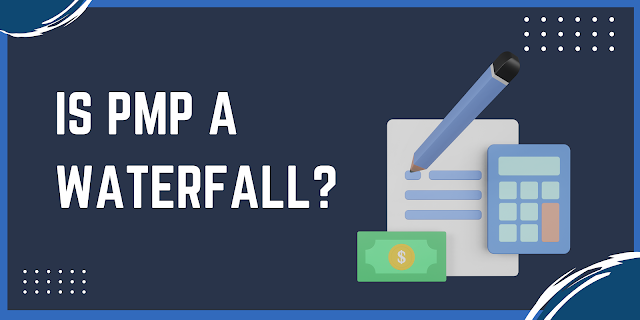Is PMP A Waterfall?
Insight of PMP & Waterfall Model
The Project Management Professional Certification by the Project Management Institute (PMI) is considered the gold standard among all project management certifications. A PMP certification provides validation to employers, stakeholders and co-workers about a person's skills and know-how in project management.
This is the reason why many companies have made PMP a requirement for employment. Moreover, PMP isn't limited to a specific industry so it provides a lot of access to jobs. People with PMP certification earn 25% more than people without the certification.
There are going to be 2.2 million jobs that need to be filled in the field of project management each year up until 2025, and the PMP certification would greatly increase one's chances of being hired for such a position.
The waterfall model is a linear life cycle, sequential model. Basically, it divides the project into phases. The waterfalls can cause problems if there are scope changes or requirements have changed because it's not easy to manage and has a rigid process. It generally follows the same steps throughout the construction industry.
History of PMBOK
PMBOK Guide is the standard for working at some of the world's most prestigious companies, such as Google. Peter Taylor and Dean Hoffman published it in 1996 to help those companies with best practices for managing projects.
Although many people associate the frameworks prescribed in the PMBOK with the waterfall methodology, it is not true that PMBOK is based on the waterfall. The PMBOK Guide does not dictate any particular methodology and supports all of its guidelines.
Evolution of PMBOK
The PMBOK guide, as time has passed, has been updated and become much more detailed. It includes processes and practices on top of methodologies. An important piece of information drawn from the guide is that there is no one ideal way to select a project life cycle, be it waterfall or agile. The guide states that it is impossible to determine which style will result in the best experience..
Interpretation of PMBOK
The PMBOK® Guide says that the change from one phase to another phase usually involves some kind of technology transfer or hand-off. This kind of phrasing is what leads readers to believe that only the waterfall methodology is relevant when following PMBOK® Guide practices. But if we are going to take ‘hand-off’ to mean that the stakeholder decided what they want the code to do and there is no feedback from the customer, then agile can be disastrous. When it comes time for iteration, the team will have already completed a phase of work with no input from the customer.
Rise of Agile
However, in recent years, Agile has seen a rise in its popularity and many industries, especially the software and IT industry has started to use it more heavily. This is why the PMP exam has also changed in order to accommodate this change that half of the PMP exam will be focusing on Agile technologies or hybrid technologies. Subsequently, the new PMBOK Guide
Conclusion
The answer to the question of whether or not PMP is a waterfall is that it does not follow any specific framework. It is up to each individual to decide how they want to do their project and what kinds of frameworks they want to use for their work.

.png)


Comments
Post a Comment